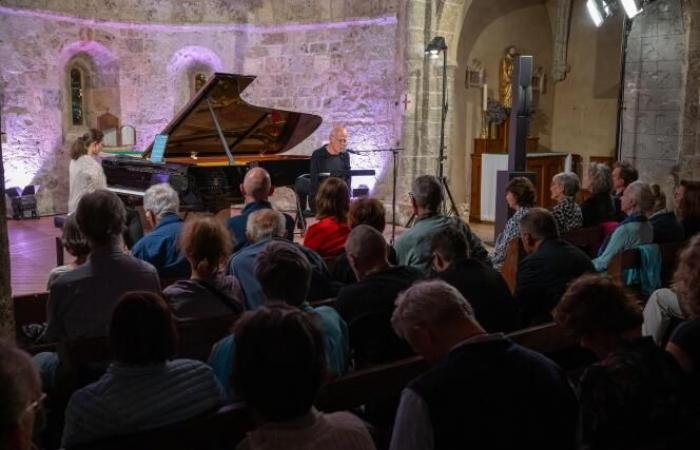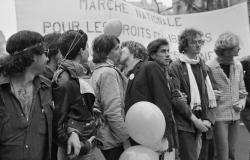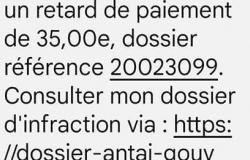Pianist Aline Piboule placed theImprovisation extracted from Eight short piecesby Gabriel Fauré (1845-1924), introducing in music the “story-recital” that she and the writer Pascal Quignard conceived around the centenary of the death of the great French composer. The two accomplices, who are performing this July 25 as part of the Messiaen Festival in the Meije region (Hautes-Alpes), know each other well: Fauré’s Last Love is their third collaboration, after Ruins (2023) et Boutès or the desire to jump into the water (2020).
A large black Steinway separates and unites them, between words and notes. The vision of this woman in the prime of life, and that of the aging creator marked by time, offers the possible version of a couple of lovers, the one that the music master formed with the young Marguerite Hasselmans (1876-1947), met at the turn of the century, in 1900. He is 55, she 24: their passion will last until the composer’s death – and beyond, the pianist and muse then devoting herself to transmitting this art of interiority that characterizes Fauré’s music.
Happiness and Despair
“He leaves the world where he once lived. He leaves Robert de Montesquiou, Countess Greffulhe, Princess Edmond de Polignac, Countess de Montebello, Colette, Willy, Marguerite Baugnies, Marcel Proust. He installs the one he loves at 23, avenue de Wagram. He gives her all his piano students, Pascal Quignard recites. The writer’s words ring true. “The love never ceases to increase. They write letters to each other every day, several times a day. Luminous letters, infinitely cultured. She reads Russian, German, Italian fluently. It is to Marguerite Hasselmans that he entrusts the piano part during the creations of the quintets and sonatas.” The veiled timbre of the writer-musician modulates his score of words with muffled steps, the force of a love that erases the contours of the social world to redraw a continent of tenderness and solitude. But the silence that affects Fauré comes from within: deafness, the first signs of which appeared very quickly.
Happiness and despair are a couple within a couple. “From the summer of 1902, hearing becomes distortednotes Quignard. What he hears becomes disorganized, and this dislocation distresses him. Music escapes his ears. Sounds that are too high rise a third higher. Sounds that are lower fall: they collapse a third lower. External music becomes such a suffering that what he composes, he no longer wants to test it on the piano. “I compose in my brain,” he writes to Marguerite. At the piano, the loving fingers of Aline Piboule distill as at the bedside of a suffering soul the emotion, the dream, the unspeakable, the eyes open in the dark, closed on the day, the time stretched out by a Barcarolle or of a Nocturnewhose musician has just delivered the complete thirteen pieces to Harmonia Mundi, the bulk of Fauré’s pianistic corpus.
You have 47.29% of this article left to read. The rest is reserved for subscribers.







